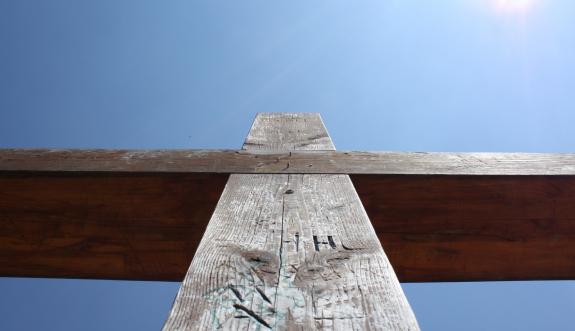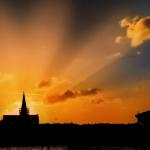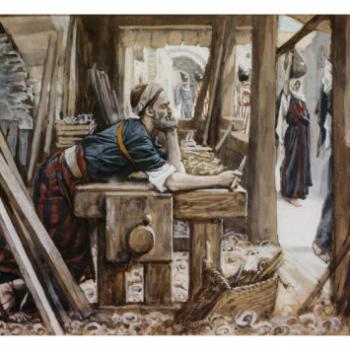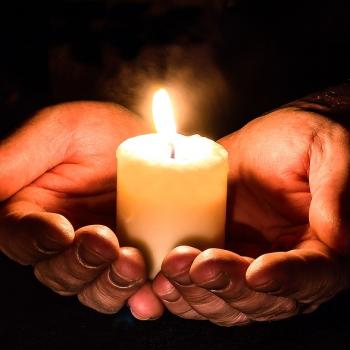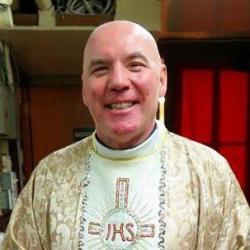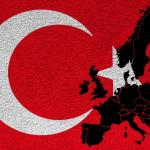From the vault, my thoughts on this feast from a few years ago…
+
If you want a sense of what this feast today is all about, you need to hear the story of Jim Schmitmeyer’s grandmother.
Father Jim Schmitmeyer is a priest and writer from the Archdiocese of Cincinnati, and in one of his books he describes the last days of his grandmother, who suffered from Alzheimer’s.
“Everything had grown completely strange to her and nothing was familiar,” he wrote. She no longer recognized anyone, didn’t know where she was, and only spoke a few phrases in German, the language of her youth.
On the night she lay dying, the family was called. Before heading out the door to the nursing home to say goodbye, her daughter thought to bring something sacred: a small wooden crucifix hanging on the bedroom wall.
Father Schmitmeyer wrote of what happened next:
“In a world where my grandmother knew nothing else, she recognized the crucifix! She reached for the cross and held it close to her until she died later that evening.”
He added:
“I am convinced that, on some deep level, in that part of us that we call the soul, we recognize the power of Christ’s cross because we retain a memory of human love…Love remains.”
And it is love that, on this particular Sunday, we embrace as surely as a dying woman embraced that crucifix.
Because, fundamentally, we are people of the cross.
We are people who recognize it as the greatest sign of the greatest sacrifice, the greatest love, the world has ever known.
Yes: we are people of the cross.
It may seem strange to some people that we celebrate it, that we “exalt” Christ’s cross—an instrument of death.
But this is the great mystery of the cross: Christ transformed that instrument of death into a source of life. That is what we celebrate. We are a part of it. And it is a part of us.
We are people of the cross.
It begins at the beginning. Before we can even speak, when we are brought to the church to be baptized as infants, the priest or deacon marks our foreheads with the sign of the cross—signifying that we are claimed for Christ. It is the very start of our lives as Catholic Christians.
As we get older, we grow up and dip our fingers into the font and learn to make the sign of the cross, reliving our baptism with every gesture and every drop of water.
Throughout our lives, we use that sign of the cross to begin every prayer, mark every blessing, punctuate our daily devotions.
We see it everywhere: on necklaces and bracelets, rosaries and rings, cemeteries and steeples.
Even now, we are, literally, in the midst of it. This morning the very place where we worship, this church, is built in the shape of a cross. Again and again we have come to this particular cross—one made of stone and glass and steel—to pray, to plead, to hope, to rejoice.
And every year on Good Friday—a day when the cross looms the largest and casts the darkest shadow—we come here again to show our special devotion. We stand before a wooden cross and venerate it with a kiss.
And we hear the words echoing: “Behold the wood of the cross, on which hung the salvation of the world.”
We are helpless before this profound truth.
We are people of the cross.
It is not, to us, a source of death. No. It is a source of strength and a cause for hope.
In the winter of 2013, one image captured that so powerfully. It was from the uprising in Ukraine. People had taken to the streets. The standoff had stretched for weeks and had claimed dozens of lives. Protestors were occupying the central square in Kiev, which was surrounded by soldiers. The soldiers stood poised with guns and shields. The protestors were unarmed.
But into this tense standoff one night came several priests. The photograph from that moment is stunning: the priests standing in the center of the square, between the soldiers and the people. They had come to pray for peace—and for life, not death.
They had only one weapon: the cross, held high.
That was their shield, their armor, and their cause.
And it is ours, too.
We are people of the cross.
Where would we be without it?
In moments of conflict, uncertainty, anxiety, hopelessness or fear…look to the cross. Look to it, too, in times of thankfulness and joy. Remember what it gave us.
Remember how, 2,000 years ago, the wood of death became, in fact, a tree of life.
And hear again the words of this gospel—a passage that has been called the most famous in the Bible. It has even been described as “the Gospel in a nutshell,” because it summarizes so simply and profoundly the substance of our faith.
“For God so loved the world that he gave his only Son, so that everyone who believes in him might not perish but might have eternal life.”
It happened because of the cross.
Jim Schmitmeyer’s grandmother understood that. In the last moments of her life, she saw the cross as a sign of love. Love that outlasts everything because, as Father Schmitmeyer wrote, “Love remains.”
I’m reminded of the words we pray during the Stations of the Cross—a refrain that, this day, becomes our anthem, our consolation, and our hope.
“We adore you, O Christ, and we praise you, because by your holy cross, you have redeemed the world.”

